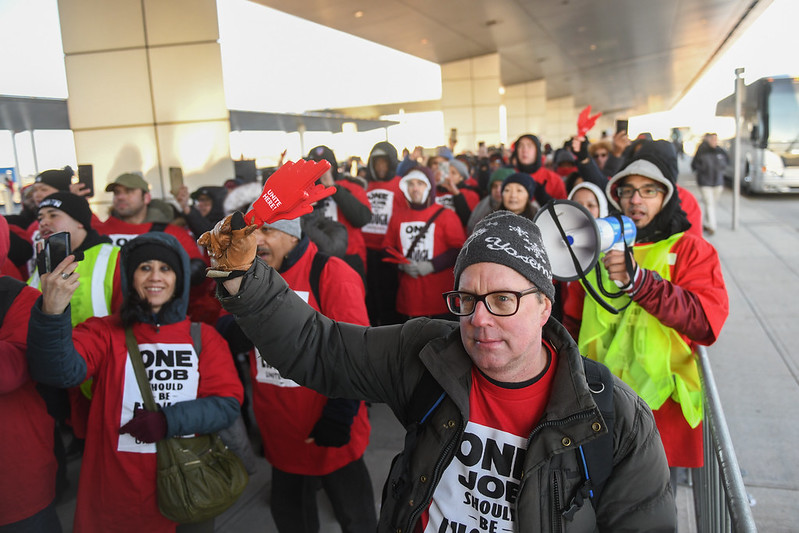
Labor movement (photo: Michael Appleton/Mayoral Photography Office)
It was called “Striketober.” While politicians in Washington bickered over infrastructure, jobs, and the social safety net, unionized workers across the heartland went on strike to get their fair share directly.
At one point in October, over 90,000 unionized workers issued strike authorizations — including 10,000 John Deere United Auto Workers (UAW) members, 37,000 nurses and other health care workers at Kaiser Permanente, and 60,000 film and television workers organized with International Alliance of Theatrical Stage Employees (IATSE).
That trend has continued into November, as John Deere workers in Iowa, Kansas, and Illinois recently rejected the latest contract proposal from management and are continuing their strike.
From hospital staff in West Virginia, steelworkers in Ohio, and educators in Pennsylvania, workers are rising up against poverty wages, long hours, and dangerous working conditions.
In total, over 22,000 workers across the country are currently on strike. This includes over 3,000 student workers at Columbia University — currently the second largest strike in the country. Columbia, with its $14 billion endowment, is threatening to alter its pay schedule for student workers while docking wages and stipends for those on strike.
Decades ago, when unions were strong, it wasn’t uncommon to see millions of workers on strike each year. While New York has one of the highest rates of union membership in the country at 22%, union membership has rapidly declined over the last few decades there and beyond, from a peak of over 33% of American workers in 1944 to just under 11% in 2020.
And as unions weakened, inequality skyrocketed. The share of income going to the top one percent of Americans has doubled from 11% in the 1940s to over 22% today. It is this pervasive inequality that is driving tens of thousands of U.S. workers to strike.
At John Deere, workers have expressed growing frustration over proposals from management to slash pensions and wage increases while the company has enjoyed record-breaking profits. John Deere is projected to rake in up to $5.9 billion this year, far exceeding its previous high of $3.5 billion in 2013.
Meanwhile, CEO John May gave himself a 160% raise — and shareholders a 17% raise on dividends. As one worker described it, “We are the last thing they think about.”
President Biden’s Build Back Better agenda, while reduced in scope due to powerful corporate Democrats wielding their influence, includes a number of policies to strengthen worker protections and hold corporations accountable.
One provision in particular, lifted directly from the Protecting the Right to Organize (PRO) Act, would fine employers $50,000 to $100,000 for each violation of the National Labor Relations Act. The bill would also invest over $2 billion in enforcement of workers’ rights, helping government officials more effectively protect workers by investigating and enforcing labor laws.
That would be a big victory. Better wages, health care, paid leave, and real curbs on inequality may always face headwinds in Washington. But as workers across the country are rediscovering, a strong union can win those things directly.
***
Rebekah Entralgo is the managing editor of Inequality.org at the Institute for Policy Studies. On Twitter @rebekahentralgo & @inequalityorg.
***
Have an op-ed idea or submission for Gotham Gazette? Email This email address is being protected from spambots. You need JavaScript enabled to view it.